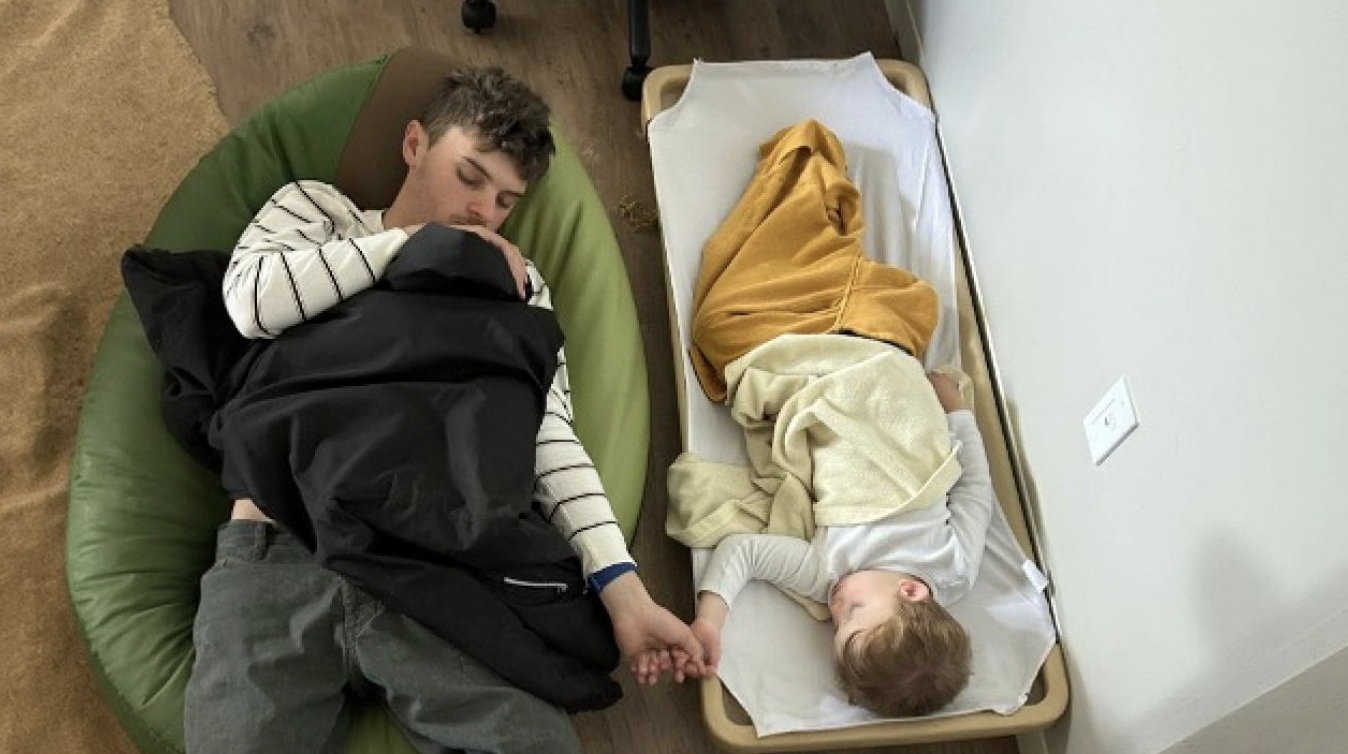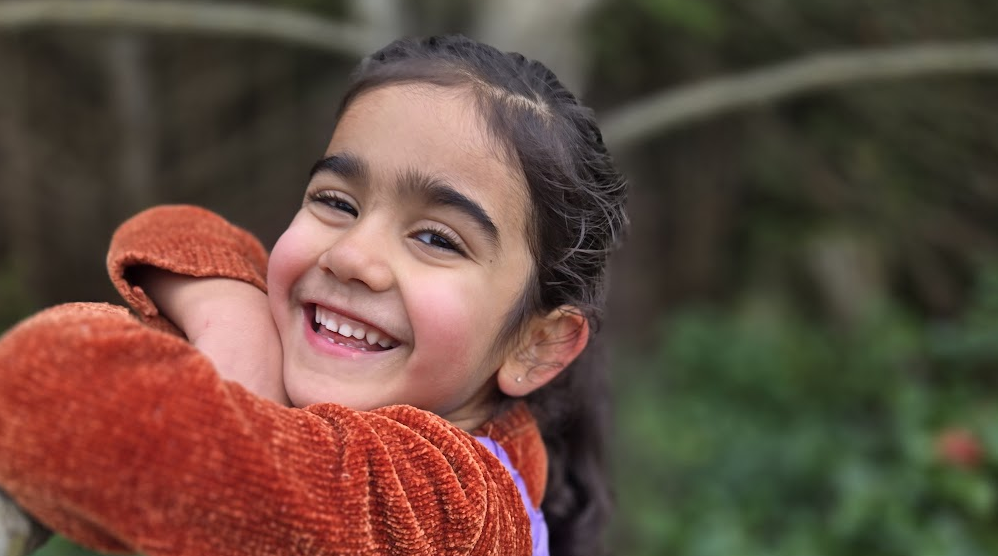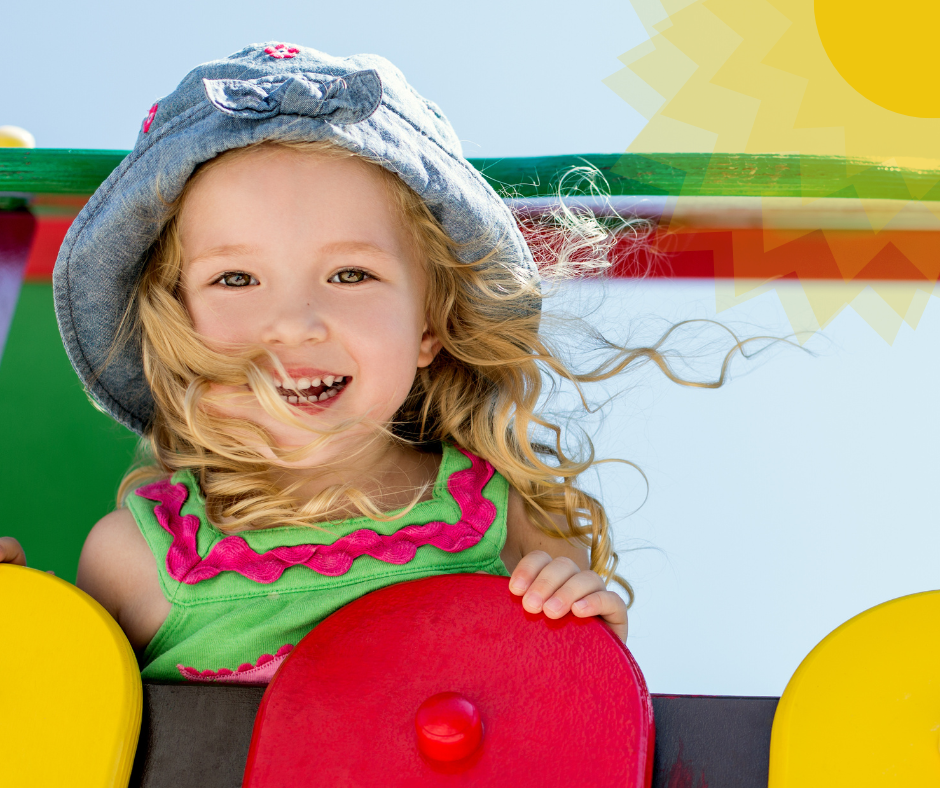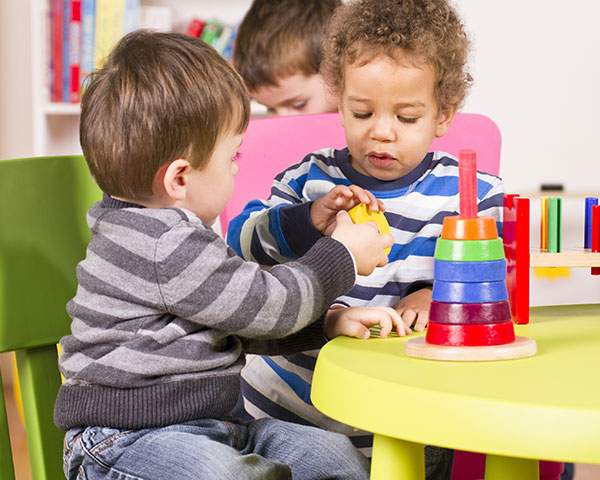Nothing I learned in my training and all my years in the field seems to work with this child!
It may feel that way at times. But it’s more likely that when Andrew punches Liane in the stomach for no apparent reason, a lot of what you know flies straight out of your head. Instead of letting panic get the better of you, think about your skills. Then concentrate on fine-tuning them and extending your repertoire.
The caring connection
Your relationship with the children is the most powerful tool you have. As you care for them, you come to learn all about them — their temperaments, developmental levels, play skills, families, cultures. You know what they enjoy, what frightens and frustrates them, what makes them sad or mad. They flourish and their self-esteem soars because you know them well, treat them with respect and honesty, and make them feel special and important.
Fortunately, there are many ways to intervene early — we can manipulate the physical environment, the program, change our own approach to the child, and look at things from the child’s perspective.
” A child with challenging behaviour dares us to examine our schedule and program as well.“
The physical environment
Depending on how it’s arranged, the physical environment can elicit either aggressive or prosocial behaviour.
- Too many people in a space leads to frustration.
- Too much open space inspires running, chasing and chaos.
- Too much noise or loud music, bright lights or smells make it hard to concentrate.
- Too many choices and/or too many toys create confusion — but too few create conflict.
- Competitive games, violent toys and playing violent roles incite aggressive behaviour.
The Program
A child with challenging behaviour dares us to examine our schedule and program as well. When you set up an activity, think not only of the skill you want to teach but also of the behaviour you are trying to encourage. Look especially at minimizing transitions and waiting times, which are veritable cauldrons of challenging behaviour.
- Post a picture schedule to help them understand. If the schedule changes, tell the children in advance and move the pictures appropriately.
- Make the transition fun. Sing songs.
- Plan to be the partner of a child who tends to lose self-control during transitions.
- Prepare your materials for the next activity before the children arrive.
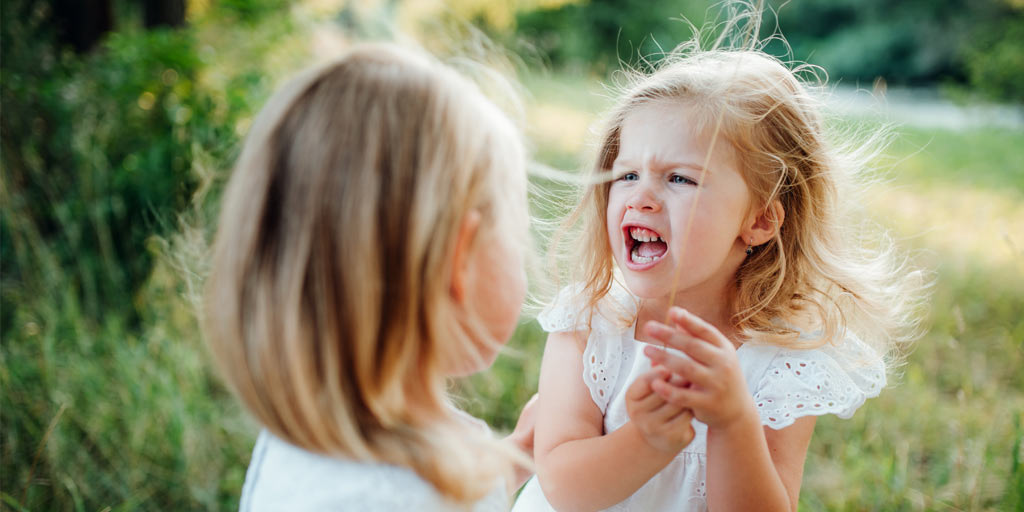
How can I change my approach to the children?
Changing your approach to the children presents the biggest challenge of all, but it is also essential.
- Use your body language — touch, hug (during COVID – smile, nod, give a thumbs up) .
- Listen attentively — “who,” “what,” “where” and “when” questions help the child to tell you what’s on her mind.
- Ask “Can I help?” “Can Miranda play with you?” “Do you want to sit with me for a while?” (If the child doesn’t want to respond verbally, respect her wishes.)
- Show empathy by validating and paraphrasing what the child is telling you.
- Reframe her statements in a positive light if you can do this honestly (“You’re learning something brand new”).
- Respond to the need within the child’s message.
View the world through the child’s eyes.
You can also head off challenging behaviour by figuring out what the child is getting from it. The key is to see it from his point of view. Every challenging behaviour can be thought of as a child’s solution to a problem and a form of communication.
You can handle this — have confidence in yourself.
View inappropriate behaviour as an opportunity to teach and learn.
When is it time to have intervention?
Asking for help is not a sign of weakness. On the contrary: it is a sign of wisdom. You are trying to solve your problem by thinking creatively and acquiring new skills.
Canadian Child Care Federation. Copyright © 2021 Canadian Child Care Federation. Some Rights Reserved. User Agreement – Privacy Policy



